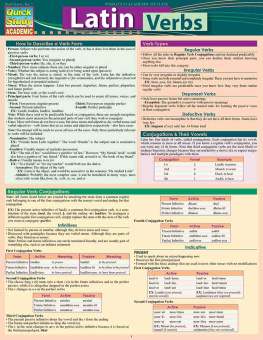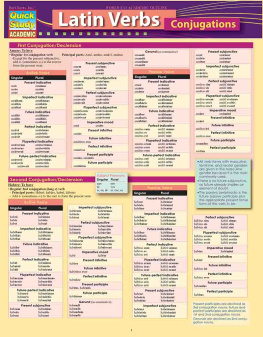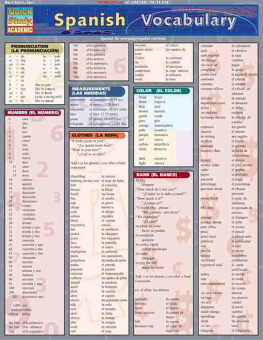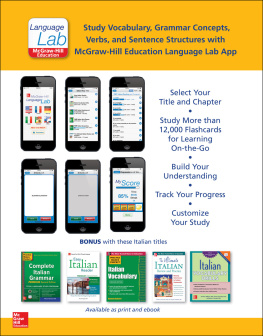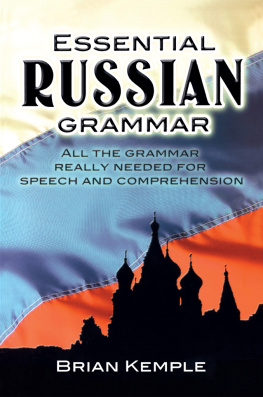
Table of Contents
Praise for Wiley's Real Latin: Learning Latin from the Source
The use of all ancient texts for illustrations of grammar, translation exercises, and longer passages is a real asset this is the best way for students to learn the Latin language in its own terms and gives good opportunity for exploration of literature, history, and culture along with grammar.
Erika J. Nesholm, Kenyon College
Many Latin students have experienced that dreadful letdown, in which they have difficulty with real Latin after months of textbook instruction. This book, with its guidance through unchanged Latin passages, offers a practical approach to a demanding language; it will be especially gratifying to students eager to read ancient texts.
Dustin Heinen, University of Texas at Arlington
Wiley's Real Latin prepares students to read Latin by using real Latin from the start. It features a clear exposition of grammar, cultural background, attractive illustrations, frequent reviews, and helpful Hints throughout.
Barbara Gold, Hamilton College
Traditional, rigorous, but also fun: experienced Latinists set out Latin as it really is, with clarity and through real Latin written by Romans. The textbook for ab initio teaching.
Calum Maciver, University of Edinburgh
A most valuable and absorbing guide for students of Latin at all levels: clear exposition, all examples from real Latin authors, biographies and illustrations to provide contexts. Use and enjoy it.
J. B. Hall, Hildred Carlile Professor of Latin Emeritus, University of London
Clarity, depth, opportunity to practice, helpful tables, images from Roman material culture, and information on the context of genuine Latin sentences set as translation exercises make Wiley's Real Latin an attractively produced rival to Wheelock's Latin.
Costas Panayotakis, University of Glasgow
This engaging guide provides students with the skills they need to read and enjoy real Latin texts. Features include clear and concise grammatical explanations, practice exercises all based on Latin authors, user-friendly layout with images, helpful hints, and vocabulary.
Sophie Weeks, University of York
An elegant and succinct introduction to Latin. Using only passages from real Latin throughout, it brings Classical writers like Cicero, Caesar, Catullus, and Ovid into the classroom from the beginning.
Anne Rogerson, University of Sydney
Very interesting approach! Material presented simply, clearly, meaningfully. Well paced. Interesting asides, linguistic and historical, with helpful hints and chapter reviews. Sentence-based exercises from authentic Latin and into English challenge both recognition and production skills. Well done!
Margaret Palczynski, McGill University
This edition first published 2014
2014 John Wiley & Sons, Inc.
Wiley-Blackwell is an imprint of John Wiley & Sons, formed by the merger of Wiley's global Scientific, Technical and Medical business with Blackwell Publishing.
Registered Office
John Wiley & Sons Ltd, The Atrium, Southern Gate, Chichester, West Sussex, PO19 8SQ, UK
Editorial Offices
350 Main Street, Malden, MA 02148-5020, USA
9600 Garsington Road, Oxford, OX4 2DQ, UK
The Atrium, Southern Gate, Chichester, West Sussex, PO19 8SQ, UK
For details of our global editorial offices, for customer services, and for information about how to apply for permission to reuse the copyright material in this book please see our website at www.wiley.com/wiley-blackwell.
The right of Robert Maltby and Kenneth Belcher to be identified as the authors of this work has been asserted in accordance with the UK Copyright, Designs and Patents Act 1988.
All rights reserved. No part of this publication may be reproduced, stored in a retrieval system, or transmitted, in any form or by any means, electronic, mechanical, photocopying, recording or otherwise, except as permitted by the UK Copyright, Designs and Patents Act 1988, without the prior permission of the publisher.
Wiley also publishes its books in a variety of electronic formats. Some content that appears in print may not be available in electronic books.
Designations used by companies to distinguish their products are often claimed as trademarks. All brand names and product names used in this book are trade names, service marks, trademarks or registered trademarks of their respective owners. The publisher is not associated with any product or vendor mentioned in this book. This publication is designed to provide accurate and authoritative information in regard to the subject matter covered. It is sold on the understanding that the publisher is not engaged in rendering professional services. If professional advice or other expert assistance is required, the services of a competent professional should be sought.
Library of Congress Cataloging-in-Publication Data
Maltby, Robert.
Wileys real Latin : learning Latin from the source / Robert Maltby and Kenneth Belcher.
pages. cm.
Includes bibliographical references and index.
ISBN 978-1-118-56180-5 (cs) ISBN 978-1-118-56185-0 (epdf) ISBN 978-1-118-56175-1 (epub) ISBN 978-1-118-56168-3 (mb) ISBN 978-1-118-56161-4 1. Latin languageGrammar. I. Belcher, Kenneth. II. Title.
PA2080.2.M35 2013
478.2'421dc23
2012050377
Cover image: Nekiy - Fotolia.com
Cover design by Simon Levy
A catalogue record for this book is available from the British Library.
List of Illustrations
The Colosseum, Rome
Hadrian's Wall, Northumberland, England
Romano-British mosaic of the wolf and twins
Casa dei Cervi (House of the Stags named for a statue found in the garden of the house), Herculaneum
Romano-British flagon
Roman glass vessel
Mosaic of Neptune's wife, Amphitrite, Ostia
Silver denarius, 1918 bc
Mosaic: four horse riders
Roman wall mosaic, comic and tragic masks, 1st century bc 1st century ad
Roman two-handled glass cup
Silver denarius, Castor and Pollux
Statue of Apollo, Pompeii
Romano-British bronze figurine, thought to be a soldier
Statue of Cicero, 1st century bc
Temple of Jupiter at the northern end of the forum in Pompeii
Romano-British bowl (1st2nd century ad ) made in Gaul
Gold aureus, ad 1649
The Baths of Neptune at Ostia
The right hand of the Colossal Statue of the emperor Constantine ( ad 272337), currently adorning the courtyard of the Capitoline Museum in Rome
Silver denarius (130 bc ), Jupiter in chariot
Section of painted wall plaster from a Romano-British villa (c. ad 20025)
Gold aureus, c. ad 113
Aeneas and Anchises (17th century)
Roman glass bowl, ad 1200
Roman bust of Pan
Dying Gaul: a Roman copy of a Greek original
Gladiators mosaic (3rd century ad )
Roman papyrus fragment
Romano-British oil lamp
Silver denarius, 4645 bc
Ruins of a thermopolium in Herculaneum, Italy
Greco-Roman figurine of a slave carrying a yoke supporting an amphora and shopping basket
Pompeii: the Marina Gate, situated on the western limit of the city on the Via Marina
Romano-British stone altar
Roman mosaic, 3rd century ad
Silver denarius, 4746 bc
Head of youthful Bacchus (god of wine)
Next page

